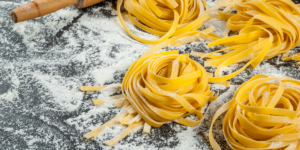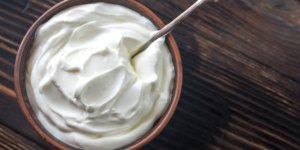A bit of pepper can take a meal from zero to a hundred in a jiffy. This statement has a dual meaning. Pepper can either enhance the taste of your meal or transform it from something safe for toddlers to something that must be paired with a jar of water.
Pepper is a commonly used condiment in many cuisines. Chinese and African foods are especially known for their spiciness. Some Africans will even tell you that a meal that lacks pepper can irritate them.
In case you fancy eating out or ordering takeout, it may do you good to know your pepper limit. While you can take the risk and blindly taste the pepper to determine its heat, using the Scoville scale is a safer method.
The Scoville scale is designed to quantify the level of heat or pungency of the capsaicin (the compound responsible for the heat) in a pepper. Quantified in SHU (Scoville heat unit), the scale runs from zero to as high as 3.2 million SHU, with an increasing value indicating a greater degree of hotness.
The principle behind the Scoville scale is dilution. Peppers with SHU of 50,000 need to be diluted up to 50,000 times before the effect of capsaicin is no longer felt.

Why it is important to know how hot a pepper is
Knowing how much pepper heat you can handle is important for several reasons, one major one being that it helps you make informed choices.
Say you’re at a restaurant, and you see a spicy meal on the menu that you would love to try. Knowing the type of pepper used for the meal and its value on the Scoville scale would help you determine whether you can handle it.
Moreover, some people find some peppers too mild and would rather have a very hot pepper instead. Understanding the placement of the pepper on the Scoville scale will help you pick a meal that appeals to you more.
If you have a peptic ulcer, peppers as mild as bell peppers may be safe since they do not have a high SHU. But when the SHU of the pepper begins to rise, you may want to take caution to prevent a medical emergency.
As a chef, making a kiddie’s special with dragon pepper could set you up for a lot of trouble. That pepper is way above the pepper limit for a child. Spices like paprika, which is made from milder peppers, would be a better option for children. It also helps you better quantify the amount of each type of pepper you need to add to a meal to get that desired spiciness.
Types of peppers
Bell pepper
This pepper is also known as sweet pepper. Many people find it mild enough to eat raw. It is the mildest type of pepper, with an SHU of zero.
Bell peppers come in three colours: red, green, and yellow. An average-sized bell pepper contains up to 90% water, which is probably why it is very mild. Bell peppers are also rich in vitamins C, B6, K, A, and E.
An example of a meal that uses bell peppers is the Hummus-stuffed bell peppers.

Poblano pepper
This is a popular Mexican chili pepper. Like the bell pepper, it is also mild. A poblano measures between 1,000 and 1,500 on the Scoville scale. This means it is much hotter than a bell pepper, but many people find it mild enough to be eaten raw and alone.
This pepper contains a good portion of vitamins A and C, as well as carotenoids. For a slightly spicy and smoky-tasting salsa, use poblano peppers.

Jalapeno pepper
Pronounced “ha-luh-pee-nio”. You may want to refill your water cup for this one.
A jalapeno measures between 2,500 and 8,000 SHU on the Scoville scale. This medium-sized pepper is known for giving meals that “extra-kick”. It is also a good source of potassium.
Although you may want to reconsider eating it raw, a jalapeno is generally considered mildly hot, since its spiciness is not overwhelming. This type of pepper is often used to prepare guacamole.

Tabasco pepper
Tabasco pepper is another Mexican chili pepper known for its spiciness. This pepper is the not-so-secret ingredient used to make Tabasco sauce.
Tabasco pepper is up to 5 times hotter than a jalapeno (30,000 to 50,000 SHU). Next time you’re at a restaurant and their menu says the food includes hot sauce, be sure to find out if it is jalapeno-hot or tabasco-hot.
Word on the street is that grilled ribs or steak tastes better with a little –just a little –tabasco pepper.

Cayenne pepper
Apart from being a good antioxidant, this pepper helps improve your metabolism and gut health. In Nigeria, it is commonly called sombo.
Cayenne pepper is an aromatic, hot chili that improves the flavour of any food you add it to. With a value of 25,000 to 50,000 SHU, it is comparable to tabasco pepper. It is the most suitable pepper for marinades and stews since it lies between mildly hot and very hot.
When adding it to your meal, do so in portions so you do not overspice it.

Scotch bonnet pepper
Scotch bonnet peppers, also known as ata rodo, are the most commonly used pepper in Nigeria. They are very hot, measuring between 100,000 and 350,000 SHU.
When cooking with this pepper, avoid open-heat methods. The fume it produces is equally spicy and could irritate your throat and eyes. Instead, cook it in a closed pan or pot. And if you must open the pot, do so carefully with your face tilted away from it.
Sometimes, it is unknowingly replaced with habanero pepper. But this is okay since both have the same degree of hotness.
Scotch bonnets are used to make stews and meals like Jollof rice.

Ghost pepper
If you do not like spicy food, avoid any food containing this pepper at all costs. This pepper has a Scoville heat unit of 1,041,427. The name seems very befitting.
Ghost pepper, also called Bhut Jolokia, is a hybrid pepper of Indian origin. In 2007, it held the Guinness World Record for being the world’s hottest pepper.
If you are a risk-taker, you can try this one out.

Carolina reapers
This is probably the fieriest of all edible peppers, with a recorded 1.6 million SHU. Like other peppers, it contains lots of vitamin C, but it is an unconventional source of the vitamin, considering the pain you would have to endure while eating it.
Surprisingly, some people use this pepper as a pizza topping or a spice for pasta dishes. This is likely because of its sweet and fruity flavour. Most times, it is used for Indian, Thai, or Mexican dishes.

There are several other types of peppers, some mild enough to snack on and others too hot to eat. Be sure to know your limit before trying out any of these peppers.











